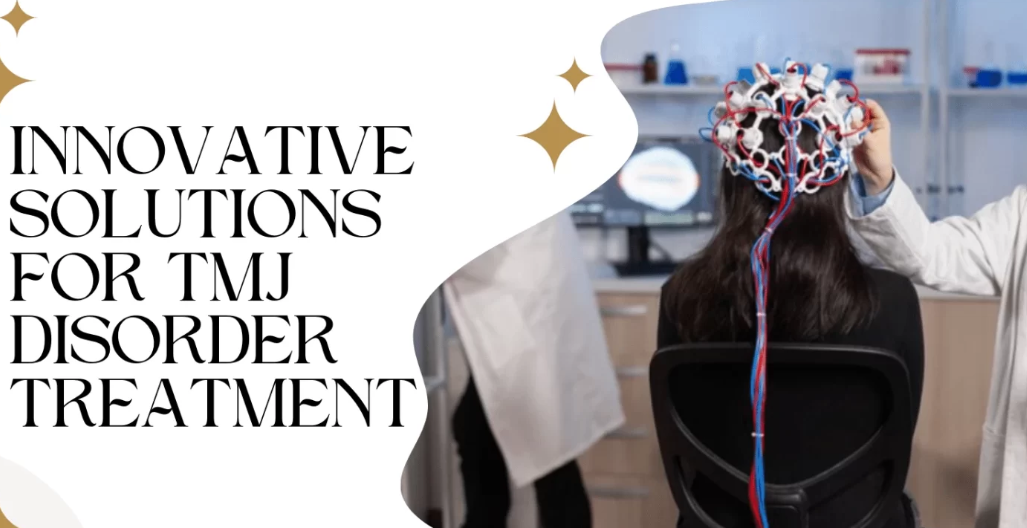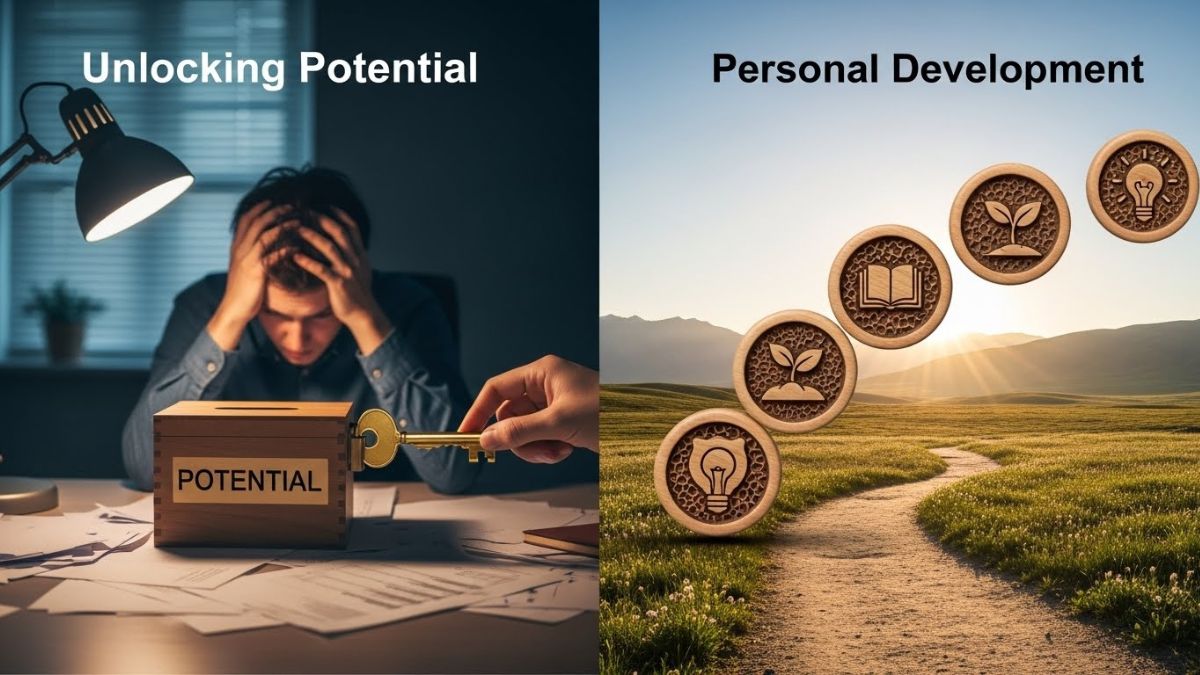GENERAL
Innovative Treatments for TMJ Disorders: What’s New in 2024?

Temporomandibular joint (TMJ) disorders can significantly impact a person’s quality of life, causing pain, limited jaw movement, and even migraines. With advancements in medical and dental technologies, 2024 has brought exciting new treatment options to the forefront. These innovative approaches not only aim to relieve TMJ-related symptoms but also consider the unique needs of anxious patients, who often struggle with traditional treatment methods.
Understanding TMJ Disorders
The temporomandibular joint connects the jawbone to the skull, playing a critical role in speaking, chewing, and other jaw movements. TMJ disorders can arise from various causes, including arthritis, jaw injury, teeth grinding (bruxism), and stress. Symptoms range from jaw pain and stiffness to clicking sounds and facial discomfort.
Historically, treatments for TMJ disorders have included physical therapy, medications, oral appliances, and surgery. While these methods are effective for many, they can be invasive or overwhelming, especially for anxious patients. New advancements are now providing gentler, more patient-friendly alternatives.
Cutting-Edge Diagnostic Tools
Before treating TMJ disorders, accurate diagnosis is essential. In 2024, AI-driven diagnostic tools are transforming the way clinicians assess TMJ conditions. High-resolution imaging, combined with machine learning algorithms, allows for precise analysis of joint health and movement. These technologies help tailor treatments to the individual, ensuring better outcomes.
For anxious patients, these non-invasive diagnostic tools are a game-changer. Traditional imaging methods like CT scans or MRIs can feel intimidating. By contrast, newer techniques involve shorter scan times and less discomfort, easing patient anxiety.
Minimally Invasive Therapies
1. Botox Injections
Botox has become a mainstream treatment for TMJ disorders, offering relief from muscle tension and pain. In 2024, advanced formulations and delivery techniques have improved its effectiveness. For anxious patients, Botox is a minimally invasive option that doesn’t require the prolonged commitment of oral appliances or surgical intervention.
2. Platelet-Rich Plasma (PRP) Therapy
PRP therapy is gaining traction as a regenerative treatment for TMJ disorders. By injecting a concentrated dose of the patient’s own platelets into the affected area, PRP promotes healing and reduces inflammation. This technique is appealing to those wary of synthetic drugs or invasive surgery.
3. Low-Level Laser Therapy (LLLT)
LLLT uses targeted light energy to reduce inflammation and promote tissue repair. In 2024, advancements in laser technology have made treatments faster and more effective. LLLT is particularly beneficial for anxious patients, as it is painless, non-invasive, and often provides immediate relief.
Personalized Oral Appliances
Oral appliances, like splints or mouthguards, remain a cornerstone of TMJ treatment. However, new materials and 3D printing technologies have revolutionized their design and comfort. Modern devices are lighter, more durable, and can be custom-fitted with unprecedented precision.
For anxious patients, the improved comfort and fit of these appliances reduce the stress associated with their use. Additionally, virtual consultations and digital impressions eliminate the need for messy molds, streamlining the process and minimizing discomfort.
Integrative and Holistic Approaches
1. Mindfulness and Stress Management
Stress is a significant contributor to TMJ disorders, particularly in patients prone to anxiety. In 2024, more clinicians are incorporating mindfulness and relaxation techniques into treatment plans. Guided meditation apps, biofeedback devices, and stress-relief programs tailored to dental health are helping patients manage tension and reduce bruxism.
2. Craniosacral Therapy
Craniosacral therapy, a gentle hands-on technique, focuses on releasing tension in the head, neck, and jaw. While not new, its integration into mainstream TMJ treatment has gained traction. Anxious patients often appreciate the soothing nature of this therapy, which can help them relax while addressing underlying issues.
Technological Innovations
1. Neuromodulation Devices
In 2024, wearable devices designed for neuromodulation are offering relief for TMJ pain. These gadgets use mild electrical stimulation to relax overactive muscles and reduce pain. Compact and user-friendly, they are ideal for anxious patients who prefer self-managed treatments.
2. Virtual Reality (VR) for Pain Management
VR is being used in dental practices to distract and calm patients during procedures. For TMJ disorders, VR environments can guide patients through relaxation exercises or divert their attention from discomfort. This approach has proven particularly effective for reducing anxiety in dental and medical settings.
Enhanced Patient-Centered Care
Anxious patients often avoid seeking help for TMJ disorders due to fear of pain, invasive treatments, or overwhelming clinical environments. Recognizing this, practitioners in 2024 are prioritizing patient-centered care. This includes:
– Trauma-Informed Practices: Ensuring that the clinical approach respects the emotional needs of the patient.
– Telehealth Consultations: Offering virtual visits for initial assessments and follow-ups, which reduce the stress of in-office visits.
– Sedation Dentistry: For patients who require more invasive procedures, modern sedation options provide a relaxed experience without the lingering effects of traditional sedatives.
The advancements in TMJ treatment in 2024 reflect a broader trend in healthcare: personalization and patient comfort. By embracing minimally invasive therapies, innovative technologies, and holistic care, practitioners are making TMJ treatment more accessible and effective, especially for anxious patients.
For anyone dealing with TMJ symptoms, now is an excellent time to explore these new options. Whether you prefer high-tech solutions like neuromodulation devices or holistic approaches like mindfulness, there is a treatment plan tailored to your needs. As innovation continues, the future looks promising for those seeking relief from TMJ disorders.
GENERAL
Unlocking the secrets: Tips and tricks for mastering simpcit6

Are you feeling overwhelmed by the chaos of everyday life? The constant hustle and bustle can leave us longing for something more serene. Enter simpcit6, a concept that embraces simplicity in every facet of our existence. Imagine living with less clutter, fewer distractions, and more meaningful connections. This guide will help you unlock the secrets to mastering simpcit6, transforming your world into a haven of tranquility and fulfillment. Let’s dive into how embracing simplicity can lead to profound benefits in your life!
Understanding the concept of simplicity
Simplicity is more than just a minimalist aesthetic; it’s a mindset. At its core, simplicity encourages us to strip away the unnecessary and focus on what truly matters.
This concept invites us to evaluate our possessions, commitments, and relationships. It asks: Are these elements enriching my life or adding noise?
By embracing simplicity, we create space for clarity. This clarity helps illuminate our priorities and passions that often get drowned out by life’s distractions.
Think of it as an invitation to breathe easier. The less clutter in your environment translates into less clutter in your mind.
Understanding simplicity is about finding balance—a way to navigate through life’s complexities with grace and ease. It’s about aligning daily choices with personal values while fostering genuine fulfillment.
The benefits of living a simple life
Living a simple life brings clarity. It strips away distractions, allowing you to focus on what truly matters. With fewer possessions and obligations, your mind becomes less cluttered.
Financial freedom often follows simplicity. By reducing unnecessary expenses, you can save more and spend wisely. This shift creates a sense of security that eases daily stress.
Health benefits are also significant. A simplified lifestyle encourages better eating habits and physical activity as you’re less inclined to indulge in excess. Your body feels lighter, energized by wholesome choices.
Relationships thrive in simplicity too. With fewer commitments, there’s more time for genuine connections with loved ones. Conversations become deeper when you’re not preoccupied with trivial concerns.
Emotional well-being improves as well. Simplicity fosters mindfulness, helping you appreciate the present moment instead of worrying about the future or dwelling on the past. Life becomes richer when it’s uncomplicated.
How to declutter your physical space
Decluttering your physical space can feel overwhelming, but it doesn’t have to be. Start small by tackling one area at a time. Focus on your desk, a closet, or even just a drawer.
Gather everything in that space and sort items into categories: keep, donate, and toss. Be honest about what you truly need versus what’s simply taking up room.
Consider the “one-year rule.” If you haven’t used an item in over a year, it’s likely not essential.
Once you’ve narrowed down your belongings, organize what’s left neatly. Use storage bins or shelves to create designated areas for different categories.
Make decluttering a routine task instead of an occasional chore. Set aside 10 minutes each week for quick tidying sessions to maintain order and simplicity in your environment. Less clutter leads to more clarity!
Tips for simplifying your daily routine
Start your day with a focused morning routine. Choose the most important tasks and tackle them first. This sets a positive tone for the rest of the day.
Consider time blocking as a strategy. Allocate specific periods for tasks, minimizing distractions and maximizing productivity. Stick to these blocks to cultivate discipline.
Embrace minimalism in your choices. Limit options when it comes to clothing or meals. This reduces decision fatigue and streamlines your mornings.
Use technology wisely by implementing apps that remind you of daily goals or help manage your calendar efficiently. Automate repetitive tasks whenever possible; let technology do the heavy lifting.
Take breaks intentionally throughout your day. Short pauses can refresh your mind and enhance creativity, making complex days feel simpler and more manageable.
Simplifying relationships and social interactions
Simplifying relationships begins with clarity. Identify what truly matters to you in your connections. Focus on quality over quantity. It’s better to have a few genuine friends than dozens of superficial acquaintances.
Clear communication is essential. Be open about your feelings and expectations. This reduces misunderstandings and fosters deeper bonds.
Set boundaries that protect your time and energy. Saying no can be liberating, allowing you to invest more in the relationships that bring joy.
Embrace vulnerability by sharing thoughts without fear of judgment. This builds trust and encourages others to do the same.
Let go of toxic dynamics that drain you emotionally or mentally. Surround yourself with positivity, fostering an uplifting environment for all involved in the relationship journey.
Creating simplicity in social interactions not only eases tension but also enriches the experience of connection itself.
Managing stress and finding inner peace through simplicity
Embracing simplicity can significantly reduce stress in our lives. When we strip away the unnecessary, we create space for clarity and calm.
Living simply allows us to focus on what truly matters. This shift helps alleviate feelings of overwhelm that often come from juggling too many commitments or possessions.
Mindfulness plays a key role here. By paying attention to the present moment, you can quiet racing thoughts and appreciate life’s small joys. Simple practices like deep breathing or meditation can be powerful tools for cultivating inner peace.
Creating a minimalist environment also contributes to serenity. A tidy space invites tranquility, making it easier to unwind after a long day.
Remember that simplicity is not just about physical surroundings; it’s also an attitude towards life’s complexities. Prioritizing your mental well-being through simple choices fosters resilience and promotes overall happiness.
Conclusion:
Living a simpler life through the principles of simpcit6 can be transformative. By understanding the essence of simplicity, you free yourself from unnecessary burdens. The benefits are vast—less stress, increased clarity, and more time for what truly matters.
Decluttering your physical space allows for a fresh start. It paves the way for creativity and productivity to flourish. Simplifying daily routines streamlines your activities, making each day feel lighter and more manageable.
Relationships also benefit from simplicity. Fostering genuine connections over superficial ones leads to deeper fulfillment. Social interactions become less complicated when we focus on quality over quantity.
GENERAL
How to Customize Your Viewing Experience Using ge remote codes

Enter GE remote codes—a game changer for anyone looking to streamline their viewing experience. With the right codes, you can control all your devices seamlessly from one remote. Say goodbye to clutter and confusion! In this article, we’ll dive into how these little numerical sequences can enhance your entertainment setup and make every movie night feel like magic. Whether you’re new to GE remotes or just need a refresher on maximizing their potential, we’ve got you covered. Let’s explore how to customize your viewing experience today!
Benefits of using GE remote codes for your viewing experience
Using GE remote codes can significantly enhance your viewing experience. One major benefit is convenience. With the right code, you can control multiple devices from a single remote, reducing clutter and simplifying your setup.
Additionally, GE remote codes allow for seamless integration with various brands. This means less time fumbling between remotes to switch channels or adjust settings on different gadgets.
Another advantage is customization. You can program shortcuts that suit your viewing habits, enabling quick access to favorite channels or apps. Personalization makes it easier to enjoy content without navigating through menus each time.
Furthermore, having precise control over volume and mute functions elevates your comfort level while watching TV shows or movies. The ability to fine-tune these settings enhances every moment spent in front of the screen. Enjoying an optimized experience has never been simpler!
How to program your GE remote with the correct code
Programming your GE remote is a straightforward task that can enhance your viewing experience. Start by identifying the device you want to control, whether it’s a TV, DVD player, or sound system.
Next, gather the GE remote codes specific to your device brand. You can typically find these codes in the user manual or on the manufacturer’s website.
Once you have the code ready, turn on your device and press and hold the “Setup” button on your remote until the red indicator stays on. Then release it and press the corresponding button for your device—like “TV” or “DVD.”
Now input the code using the number buttons. If done correctly, you’ll see a red light blink and turn off. Test your remote functions to ensure everything works seamlessly!
Additional tips and tricks for customizing your viewing experience
To enhance your viewing experience, consider organizing your remotes. Use a universal remote that can handle multiple devices seamlessly. This minimizes clutter and streamlines control.
Adjust the picture settings on your TV for optimal clarity. Experiment with brightness, contrast, and color saturation to find what feels right for you. Each room’s lighting may require different adjustments.
Explore available features on streaming services too. Many platforms offer personalized recommendations based on your viewing history; take advantage of these suggestions to discover new favorites.
If you’re into gaming, customize the audio settings as well. Surround sound options can greatly improve immersion during gameplay or movie-watching sessions.
Keep an eye out for firmware updates from device manufacturers. Regularly updating software ensures access to the latest features and improvements for maximum enjoyment of your entertainment system.
Troubleshooting common issues with GE remote codes
When using GE remote codes, you might encounter some common issues that can be frustrating. One frequent problem is the remote not responding at all. This could indicate dead batteries or a need for reprogramming.
If your GE remote isn’t controlling the device as expected, double-check that you’ve entered the correct code. Sometimes, it takes multiple attempts to find the right one.
Another issue may arise when certain buttons don’t function properly. Ensure there’s no obstruction between the remote and your device. Dust or dirt on sensors can also affect performance.
Should you face persistent problems, try resetting your remote. Remove the batteries for a minute before reinserting them to refresh its settings.
Remember, specific devices often have unique codes; verifying compatibility can also save time and effort in troubleshooting these pesky issues.
Conclusion:
GE remote codes are a fantastic way to enhance your viewing experience, allowing you to customize how you interact with your devices. By programming your GE remote correctly, you can control multiple gadgets seamlessly and enjoy all the features they offer without hassle.
Using these codes not only simplifies operation but also brings together various devices under one convenient remote. This means fewer remotes cluttering your living space and more time enjoying your favorite shows or movies.
Programming might seem complex at first, but following straightforward steps will have you navigating channels in no time. Plus, with additional tips and tricks at hand, you’ll discover even more ways to tailor the experience to suit your preferences.
GENERAL
Unlocking Potential: Discovering the Role of dados as in Personal Development

Personal development is a journey many embark on, yet few truly understand the power of the tools available to them. It’s not just about setting goals or reading self-help books; it’s about unlocking hidden potential and fostering growth in all aspects of life. One such tool that has gained traction in recent years is dados as, an intriguing concept rooted in history and rich with promise for those willing to explore its depths.
Imagine having a roadmap tailored to your unique strengths and weaknesses—a way to enhance your skills while also nurturing your emotional well-being. The beauty of personal development lies in discovering what works best for you, and dados as offers a refreshing perspective that can transform your approach. Ready to dive deeper? Let’s unravel this fascinating concept together!
The Concept of Dados and its History
Dados, often referred to as “data” in the context of personal development, traces its roots back to ancient practices. The term itself has evolved over time, reflecting changing perceptions of knowledge and information.
Historically, different cultures used various forms of dados—such as storytelling or parables—to pass down wisdom and insights. These narratives served not merely for entertainment but also as tools for reflection and growth.
As societies progressed, so did our understanding of what constitutes valuable data in personal development. Today’s dados encompass a wide range of resources including books, courses, workshops, and even digital content.
The shift from oral traditions to written records marked a pivotal moment in how we engage with knowledge. It laid the groundwork for individuals seeking structured paths toward self-improvement through actionable insights derived from diverse sources.
How Dados can be Used for Personal Development
Dados, often seen as mere tools for games, can unlock a deeper potential in personal development. Their unpredictable nature mirrors life’s uncertainties. Embracing that randomness encourages adaptability.
Use dados to set intentions or goals. Roll them and let the outcome guide your focus for the day or week ahead. This playful approach fosters creativity and helps break through mental blocks.
Incorporate dados into journaling rituals. Each roll can symbolize different themes you explore—self-reflection, gratitude, or aspiration. It adds an element of surprise to your introspection process.
Group activities with dados promote teamwork and communication skills. Sharing interpretations of each roll strengthens connections with others while fostering empathy.
Consider creating challenges based on dado outcomes—small tasks inspired by what they reveal about yourself or your aspirations. This dynamic interaction makes personal growth engaging and memorable.
Tips for Incorporating Dados into Your Own Personal Development Plan
Start by identifying your goals. What areas of personal development resonate most with you? Use dados as a tool to clarify these aspirations.
Next, set measurable milestones. Break your larger objectives into smaller, actionable steps. This way, you can track progress and celebrate achievements along the way.
Incorporate regular reflection sessions into your routine. Reflecting on experiences allows for deeper insights and adjustments in your approach.
Consider integrating dados into journaling practices. Writing about daily challenges or successes can illuminate patterns that need attention.
Seek community support by sharing your journey with others interested in personal growth. Engaging with like-minded individuals can provide new perspectives and encouragement.
Stay flexible in your plan. Life is unpredictable; adapt as necessary while maintaining focus on the core principles of dado practice in achieving personal excellence.
Potential Challenges and How to Overcome Them
When incorporating dados as into your personal development journey, you might encounter various challenges. One common hurdle is the lack of understanding about how to effectively use dados as for self-improvement.
To overcome this, start by educating yourself. Research different methodologies and how others have successfully integrated dados as into their lives. Online courses and community forums can be invaluable resources.
Another challenge is maintaining motivation over time. The novelty may wear off, leading to a decline in enthusiasm. To combat this, create small milestones that celebrate your progress along the way.
Be prepared for setbacks. They are part of any growth process. When faced with obstacles, practice self-compassion and reassess your approach rather than giving up entirely. Adjusting goals or strategies can often reignite your passion for personal development through dados as.
Conclusion:
Personal development is a journey that many embark on in pursuit of self-improvement and fulfillment. The concept of dados as—integral to this journey—offers unique insights into our growth potential. By understanding the historical significance and practical applications of dados, you can unlock new avenues for personal growth.
Incorporating dados into your personal development plan can enhance your self-awareness, decision-making skills, and overall life satisfaction. While challenges may arise along the way, embracing these obstacles as part of the process will empower you to adapt and thrive.
-

 GENERAL2 years ago
GENERAL2 years agoDiscovering the Artistic Brilliance of Derpixon: A Deep Dive into their Animation and Illustration
-

 Posts2 years ago
Posts2 years agoSiegel, Cooper & Co.
-

 Lifestyle2 years ago
Lifestyle2 years agoPurenudism.com: Unveiling the Beauty of Naturist Lifestyle
-

 HEALTH2 years ago
HEALTH2 years agoTransformative Health Solutions: Unveiling the Breakthroughs of 10x Health
-

 FASHION2 years ago
FASHION2 years agoThe Many Faces of “λιβαισ”: A Comprehensive Guide to its Symbolism in Different Cultures
-

 Lifestyle2 years ago
Lifestyle2 years agoBaddieHub: Unleashing Confidence and Style in the Ultimate Gathering Spot for the Baddie Lifestyle
-

 Entertainment2 years ago
Entertainment2 years agoGeekzilla Podcast: Navigating the World of Pop Culture, Gaming, and Tech
-

 Lifestyle1 year ago
Lifestyle1 year agoSandra orlow: Unraveling the Story of an Iconic Figure
